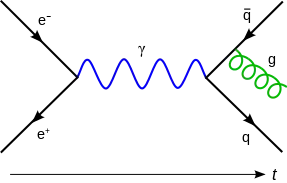Short answer: A virtual particle is not the opposite of a classical particle.
While the other answer captures some aspects correctly, there are still a few flaws and inaccuracies which in the following, I will try to set straight.
Wave-particle duality
Strictly speaking, quantum objects are neither waves or particles. They are entities behaving like either the one or the other, depending on the situation. I will nevertheless refer to them as particles, as in the context of quantum field theory the quantum nature is implied.
The statement that particles are states in a Fock space is not true in general. This only holds when we are dealing with free, i.e. non-interacting particles. Quantum field theory would not be as involved as it is if all we had to deal with were free particles. The precise formulation of a state space for interacting theories is not known. There exists, however, a formalism that allows to classify physical states; the keyword is BRST symmetry. For more detail on this, see the answers to this question.
Since the state space of particles is problematic, using it as a description of what a quantum object really is in the context of wave-particle duality is questionable.
Virtual photons
Virtual photons, or virtual particles in general, are relevant in the context of Feynman diagrams. The latter are a convenient way of graphically organizing perturbation series in quantum field theory, allowing us to calculate various kinds of observable quantities. Unlike stated in the other answer, virtual particles not only correspond to loops, but all internal lines in such diagrams. Furthermore, lines in Feynman diagrams are not worldlines in spacetime-diagrams, and the lines do not correspond to propagating particles in reality. The only objects of physical relevance are the in- and out-states, which correspond to real, measurable quantities (one has to be cautious in the case when one is talking about so-called resonances, but this is a different story). See for example the following diagram:

This should not be understood as a photon (denoted by $\gamma$) propagating through spacetime as an intermediate state, but just as a mathematical contribution to a perturbation series, where that internal line contributes a specific analytic quantity. Feynman diagrams are just mathematical tools, and so are virtual particles. See my answer to this question for more detail.
The connection: there is none
Just because quantum particles are not particles in the classical sense, it does not mean that they are virtual particles either. The logical flaw in your suggestion is that virtual particles and real, classical particles are not opposites.
